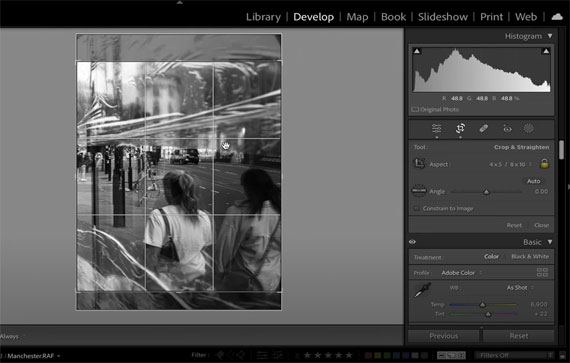In his recent video, street photographer Tim Jamieson shares nine practical tips for enhancing your black and white street photography skills. He takes the viewers on a journey from simple composition to intricate editing, equipping them with tools and tricks to elevate their black and white shots:
Why Black and White?
Firstly, Jamieson explains the unique appeal of black and white photography. He argues that black and white is timeless, connecting us to the pioneers of street photography who had no other option. Moreover, black and white simplifies the scene, eliminating color-related distractions and focusing on tones, contrast, texture, and shapes. This simplicity is especially helpful for beginners learning to make stunning street photos.
Two Ways to Approach Black and White
Jamieson breaks down two primary approaches to black and white street photography:
- Shooting as usual, while keeping an eye out for scenes that may work well in black and white.
- Shooting with the specific intent of creating black and white images, influencing what you look for in compositions.
The Nine Tips
Jamieson’s nine tips provide an invaluable guide to mastering black and white street photography:
1. Minimalism: Leveraging minimalist composition techniques like leading lines, wide shooting, and negative space helps create crisp, clean images.
2. Contrast: Contrast is paramount in black and white photography. Look for contrasting light and shade, use shadows to frame or isolate subjects, and arrange subjects with ample space around them for maximum impact.
3. Mood: Use techniques like under-exposing and adding grain in post-processing to imbue your photos with an emotional, moody quality.
4. Shapes and Framing: Make use of shapes and objects to frame your images or add visual layers.
5. Subjects and Details: Emphasize the subject of your photos by using a longer focal length, which can result in compelling, subject-driven images.
6. Archive Dive: Revisiting your old shots and converting them to black and white can offer valuable insights into what works and what doesn’t.
7. Settings: Setting your camera to black and white helps train your eye to see the world in terms of shade and contrast.
8. Light and Shadow: Play with harsh lights and shadows to create instant contrast, focusing on how light interacts with your environment.
9. Editing: Finally, Jamieson shares his editing workflow, which ranges from creating an even exposure to adding texture and grain, and creating a 35mm film-like vibe with an ‘S’ curve.
Bonus Tips
Jamieson also offers two bonus tips:
- Shooting in Any Condition: Don’t shy away from overcast conditions – they can add depth to black and white images.
- Avoiding Mediocrity: Simply desaturating an average photo will not make it an extraordinary black and white image. Experiment with your skills and learn from the process.
Whether you’re a seasoned photographer or a beginner, trying out these tips could enrich your street photography skills and bring a fresh perspective to your portfolio.
Like This Article?
Don't Miss The Next One!
Join over 100,000 photographers of all experience levels who receive our free photography tips and articles to stay current:







Leave a Reply